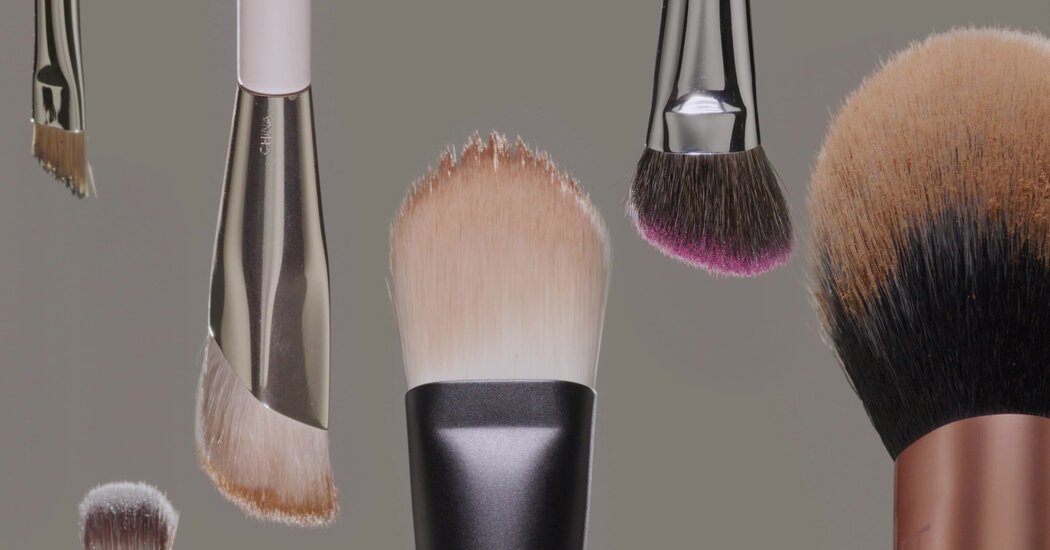Introduction
The world of makeup brushes can feel overwhelming. With endless options—angled, fluffy, tapered, flat, kabuki—it’s hard to know which ones are truly necessary. The truth is, you don’t need an entire 30-piece brush set to achieve flawless makeup. Instead, a few essential brushes can cover all your basic needs, making application easier, smoother, and more professional-looking.
This article breaks down the must-have brushes for beginners and pros alike, what they do, and tips for choosing quality tools that last.
Why Makeup Brushes Matter
While fingers and sponges work in some cases, brushes provide:
-
Precision: Perfect for contouring, blending, and defining.
-
Hygiene: Easier to clean and more sanitary than fingers.
-
Even Application: Distributes product smoothly without streaks.
-
Product Control: Helps avoid wasting makeup.
Essential Face Brushes
1. Foundation Brush
-
Flat Foundation Brush: Great for liquid formulas, offering a smooth finish.
-
Buffing Brush: Dense, round brush that blends foundation seamlessly.
-
Alternative: Beauty sponge, but a brush often gives more coverage.
2. Powder Brush
-
Large and fluffy, ideal for applying loose or pressed powder.
-
Ensures even distribution to set makeup without caking.
3. Blush Brush
-
Soft, medium-sized brush with rounded edges.
-
Perfect for applying blush to the apples of your cheeks.
4. Contour/ Bronzer Brush
-
Angled brush to sculpt cheekbones and jawline.
-
Helps control placement for a natural shadow effect.
5. Highlighter Brush
-
Fan brush or small tapered brush.
-
Lightly dusts highlighter on cheekbones, nose, and brow bone.
Essential Eye Brushes
1. Eyeshadow Brush
-
Flat, dense brush for packing color onto the lid.
2. Blending Brush
-
Fluffy and tapered, blends eyeshadow seamlessly into the crease.
3. Angled Eyeliner Brush
-
Thin, angled brush for gel or powder eyeliner.
-
Also works for filling in brows with precision.
4. Smudge Brush
-
Short and dense, perfect for smoking out eyeliner or applying shadow under the eyes.
5. Brow Spoolie
-
Not technically a brush, but essential for grooming brows and blending brow products.
Optional But Useful Brushes
-
Lip Brush: Helps apply lipstick precisely, especially bold colors.
-
Detail Brush: For small, precise work like inner corner highlights.
-
Kabuki Brush: Dense and versatile for blending foundation, bronzer, or powder.
How to Choose Quality Brushes
-
Look for soft but firm bristles that don’t shed.
-
Synthetic bristles are best for cream and liquid products.
-
Natural bristles work well with powders (though many brands now make excellent synthetic versions).
-
A comfortable handle ensures better control.
Brush Care and Maintenance
-
Clean brushes weekly with gentle soap or brush cleanser.
-
Let them dry flat to maintain shape.
-
Store upright in a holder or case to prevent damage.
Conclusion
You don’t need a massive brush collection to achieve flawless makeup. A few versatile brushes for foundation, powder, blush, contour, highlighter, and eyeshadow blending will cover most looks. By investing in quality brushes and caring for them properly, you’ll enjoy smoother application, better results, and longer-lasting tools.
FAQs
Q1: Do I really need makeup brushes if I use my fingers?
Fingers work for some products, but brushes provide more precision and a polished finish.
Q2: What’s better—synthetic or natural brushes?
Synthetic brushes are cruelty-free and excellent for liquids/creams, while natural bristles are traditionally better for powders.
Q3: How often should I clean my brushes?
At least once a week for face brushes, and every few days for eye brushes to prevent bacteria buildup.
Q4: Can one brush be used for multiple purposes?
Yes, versatile brushes like fluffy blending brushes or angled brushes can serve multiple functions.
Q5: Are expensive brushes worth it?
Not always—many affordable brands offer high-quality brushes that perform just as well.
